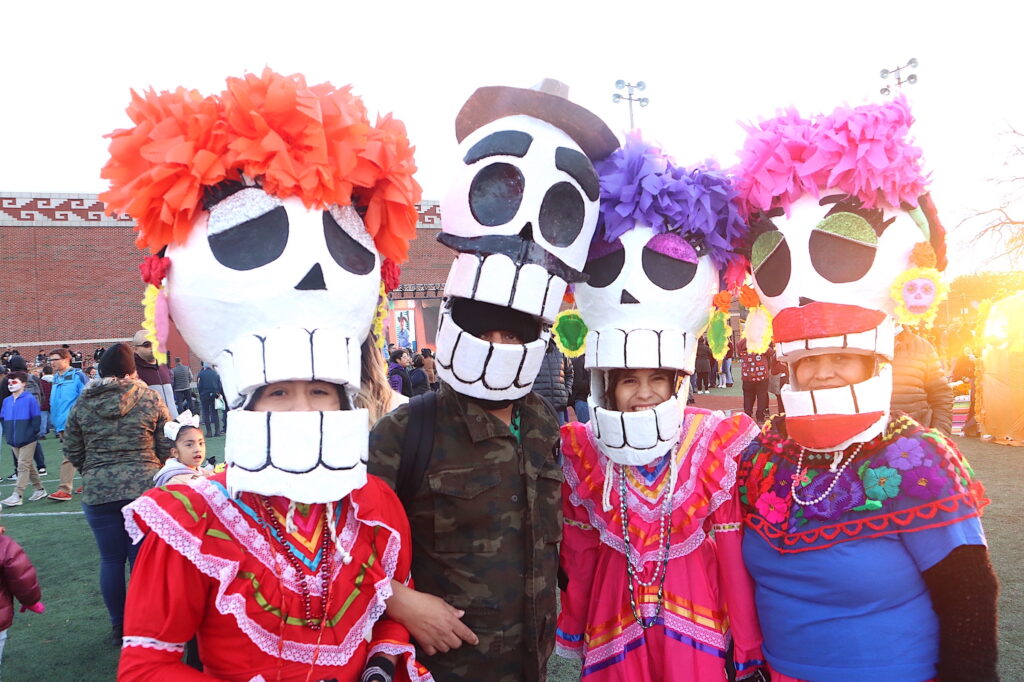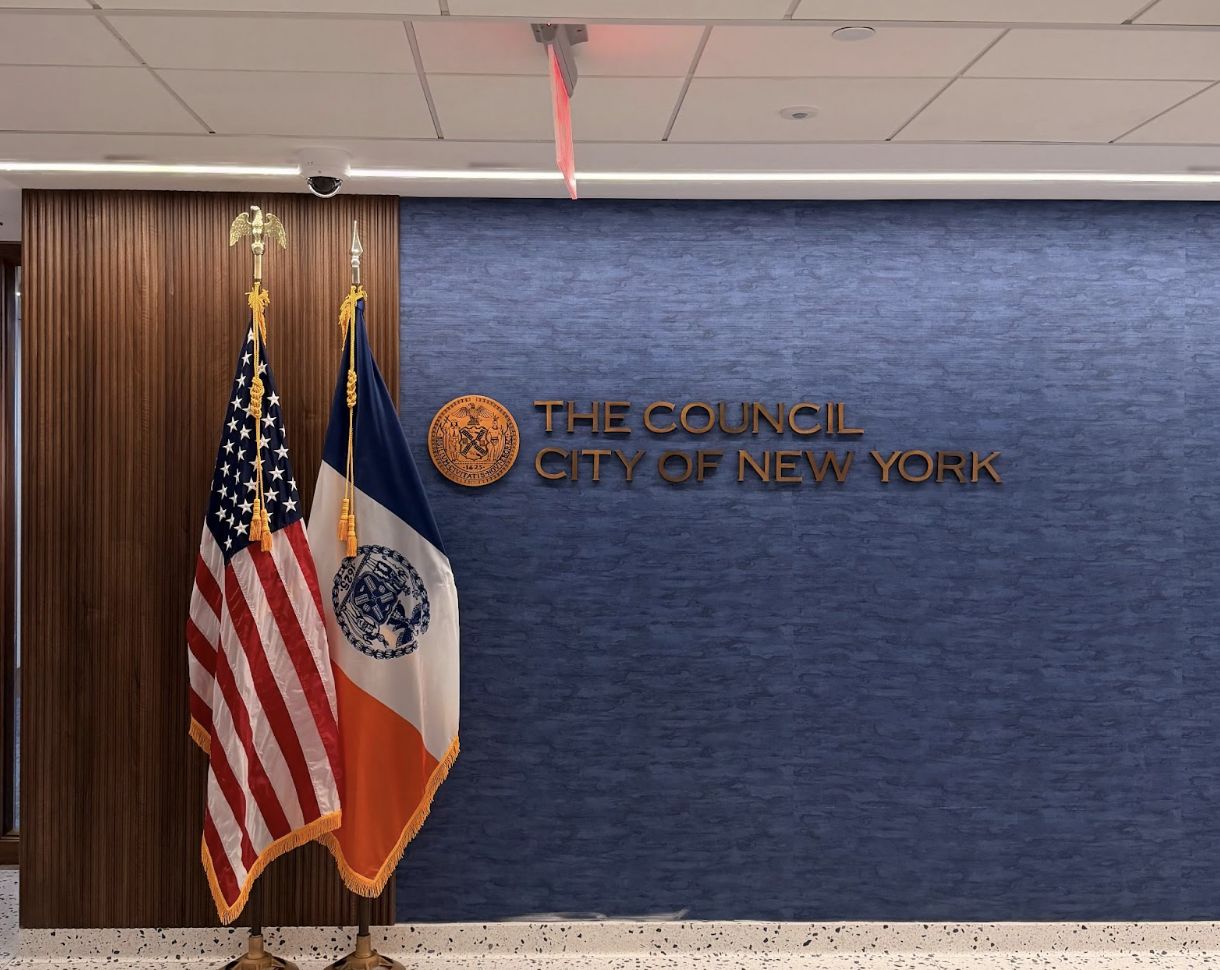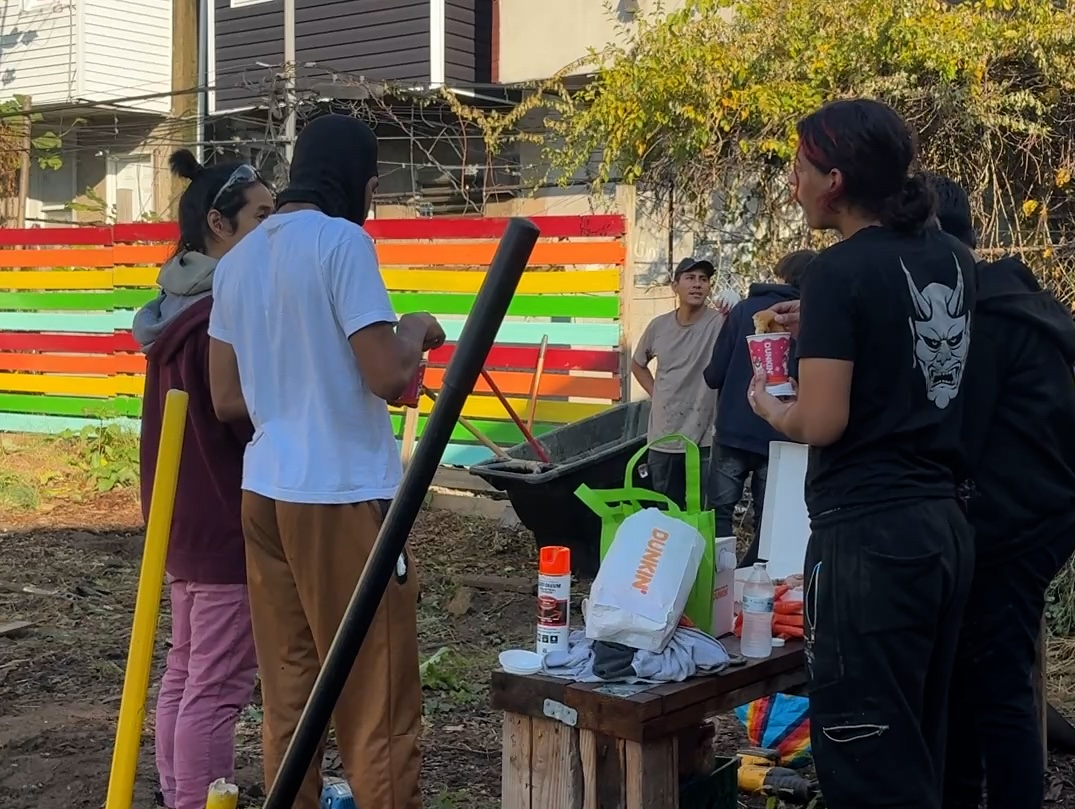(CHICAGO) — The National Museum of Mexican Art held its annual Día de los Muertos Xicágo event on Oct. 30 in Chicago’s Lower West Side neighborhood of Pilsen. The smokey smell of fresh barbecue and used sparklers covered the block. The open field was filled with a lively crowd moving to the thriving music, talking with family and friends, and standing proudly by their bold-colored altars.
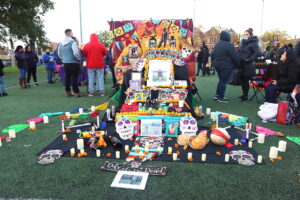
Altar of offerings at the Día de los Muertos event. [Credit: Taylor Blair]
This marked the museum’s seventh year hosting the free celebration in the Pilsen community after a year off due to COVID-19. Primarily an outdoor event, there were live music performances, light refreshments, and art activities for families.
Placed among the crowd were altars erected by attendees decorated with photos, food, drinks, and Mexican marigolds. The flower symbolizes a path created between the living and the dead. Some attendees walked around the event dressed as decorated skulls, or calaveras, in traditional face painting or giant costumes.
The Click spoke with Pilsen couple Omar Vega, 40, and Mauricio Garcia, 27, about their personal experience with Día de los Muertos and the museum’s celebration.
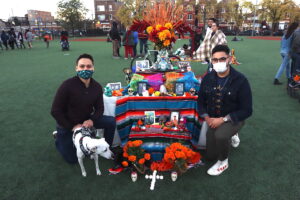
Omar Vega and Mauricio Garcia in front of their altar. [Credit: Taylor Blair]
Garcia feels a special attachment to the celebration. He was born and raised in Michoacán, Mexico, where the holiday originated in the city of Pátzcuaro.
“Typically, we have these grand ofrendas in our schools and homes where we have pictures of friends and family that have passed away,” Garcia said. “We try to bring everything they loved here in the world and remember them and reminisce. We sit around these ofrendas and share stories about them and keep them in our memories as much as we can.”
Garcia says that he and his partner frequent the museum and subscribe to the museum’s email newsletters. They said that the event has been growing each year, and people from all around Illinois, not just Pilsen, come out to celebrate.
“These types of events elicit these feelings and emotions that we oftentimes don’t think about year-round,” he said.
